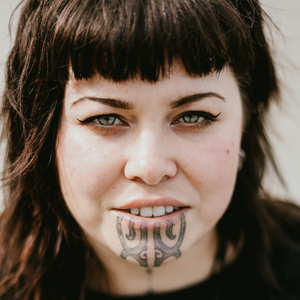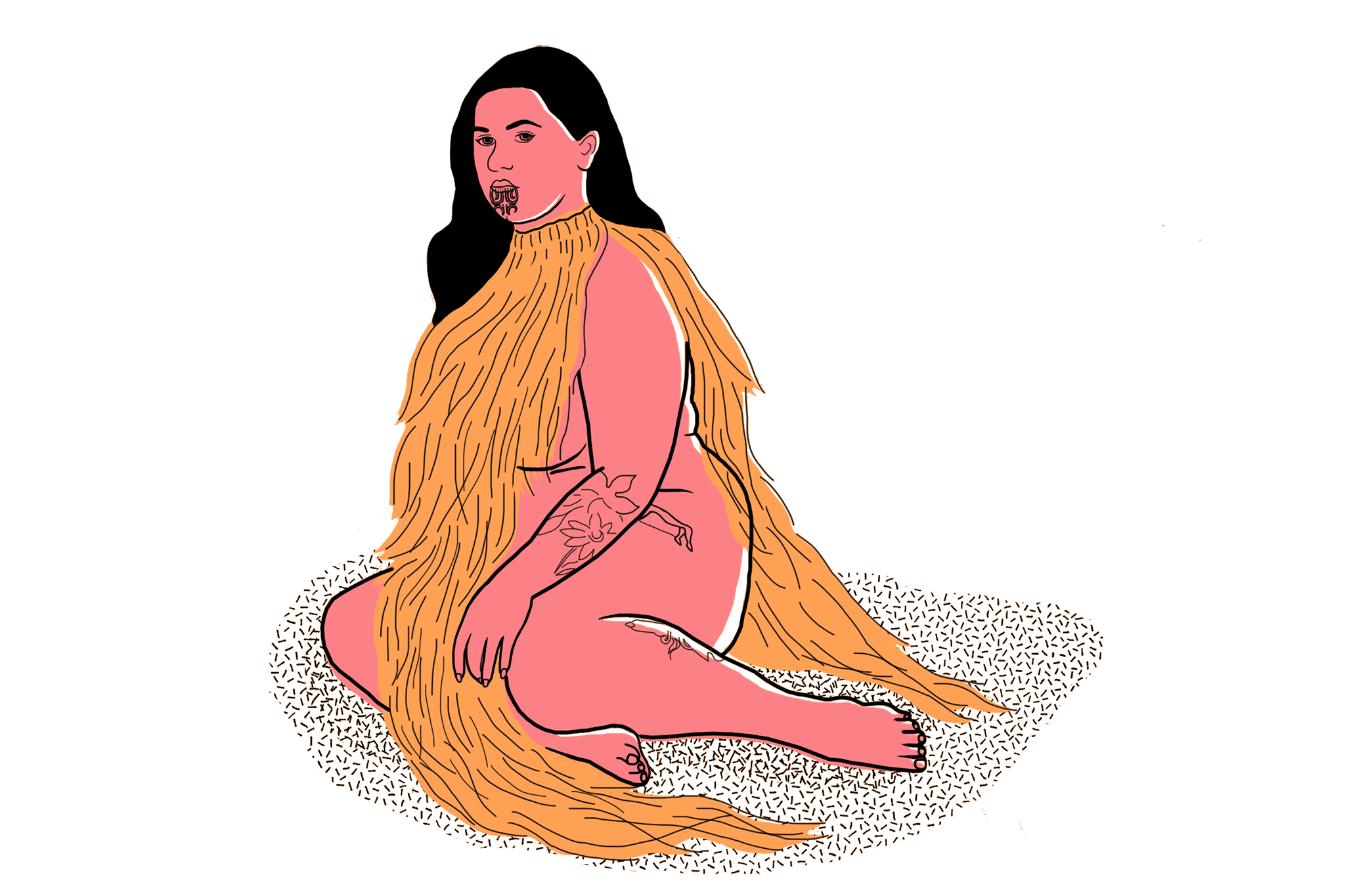Being fat, Māori and naked on instagram by Anna McAllister
Instagram has a billion users. So why does it seem to want to hide a small group of them?
I am wāhine mau-moko, which means I wear moko kauae. I am a white passing Māori, which means my pale skin affords me certain privileges. And I am an unashamedly fat, young, queer wahine, and I like to think my hyena laugh can be heard by my tīpuna in te pō. I like to stir shit up, be loud, be brave, and be angry when everyone tells me to do the opposite.
Like most fat people, I have had a fraught relationship with body image since I was a child. Puberty hit me at the age of 7 with a pair of double D’s and an ever expanding puku. As I got older I was hyper aware of the way my fat, squishy body did not fit with the images I saw in the media. Later in life I began to understand the politics of my body and the intersections within my identities.
All of this has made me feel the desire to carve out a space for myself and those like me. This space ended up becoming my instagram page.
I use my instagram for a lot of things, cultural education, art, cultural appropriation conversations, but most of all, thirst traps. In my opinion, my thirst traps themselves are a radical, decolonial and re-indigenising act.
We live in a society that says that my body, my shape, my appearance is not only not desirable, but also should be actively ‘fixed’. Therefore the act of loudly loving my own body is inherently radical. The obsession western culture has with thin women comes from the desire for women to take up as little physical and metaphorical space as possible.
In Māori culture, it was understood that wāhine naturally carried more fat reserves for logical reasons. Wāhine were never made to shrink, lose weight or act smaller. Our fat has carried us across oceans of ten foot waves, from one edge of Te Moana Nui a Kiwa, to the other.
In a more contemporary context, our fat has kept us warm on nights when we have been alone and lonely. This reminds us of our independence and mana, that we do not need anyone but our own fat bodies for survival. Cuddle your own fat rolls, they’re beautiful and it’s indigenous.
A thin white woman covering her nipples with her hands is allowed, but when a fat person does the same act it is considered sexual due to the larger amount of flesh.
I have been so in love with my stretch marks lately, often staring at them in the mirror. I have stretch marks all across my body, most of them have turned a pearl colour. Some of them are so deep that my fingers fall into them when I try to trace their outline. My saggy boobs are also something I have been thinking about lately. Loving them more and more every time I look at them. Saggy boobs and stretch marks are some of the things you still don’t see on ‘curvy’ bodies even in this time of growing acceptance of different body shapes.
So with all this in mind, there is my instagram page. Instagram has vague ‘community guidelines’ around nudity and ‘sexual content’. Using phrases like ‘No close-up images of the human buttocks. No female nipples. And no sexual acts in photography.’ Though these may sound like positive restrictions to make, they are often enforced in a sexist, racist and fatphobic way.
A thin white woman covering her nipples with her hands is allowed, but when a fat person does the same act it is considered sexual due to the larger amount of flesh. The current guidelines are also not enforced in the same way. Influencer Dan Bilzerian can have thin naked women posed sexually, but an image of me where I am fully clothed in a bikini is removed for sexual content.
When an instagram account starts getting images removed regularly it is placed on a list which checks your content as you post it, meaning no one actually has to report it, the algorithm will pick it up regardless. And Instagram’s own policies are so inconsistent that though my friend and I published the exact same image, only one of them was taken down.
Then comes the shadow ban…
A shadow ban is when your content is no longer or less visible to your audience. People are unable to tag you, or search you. Essentially they punish you by minimising your content engagement. Instagram doesn’t tell you if you're shadow banned, why you’re shadow banned, or when it will end.
For people like me who sell art through instagram, a shadow ban could mean a lack of income. If you break the guidelines enough, your account will be deleted, and your followers - your audience — along with it. When you have spent time and effort into carving out a space for your and those like you, this is a scary prospect.
But we will keep doing it. I have been warned my account will be deleted many times. But I ignore it, try to follow the weird obscure rules as best I can. Whilst continuing to post pictures that honor and idolise fat, brown bodies. Because, it is an inherently decolonial, re-indigenizing, and whakamana ngā wāhine thing to do.
About the author

Anna McAllister is a self-proclaimed fat, angry Māori wahine. She is an artist, writer, and activist.
